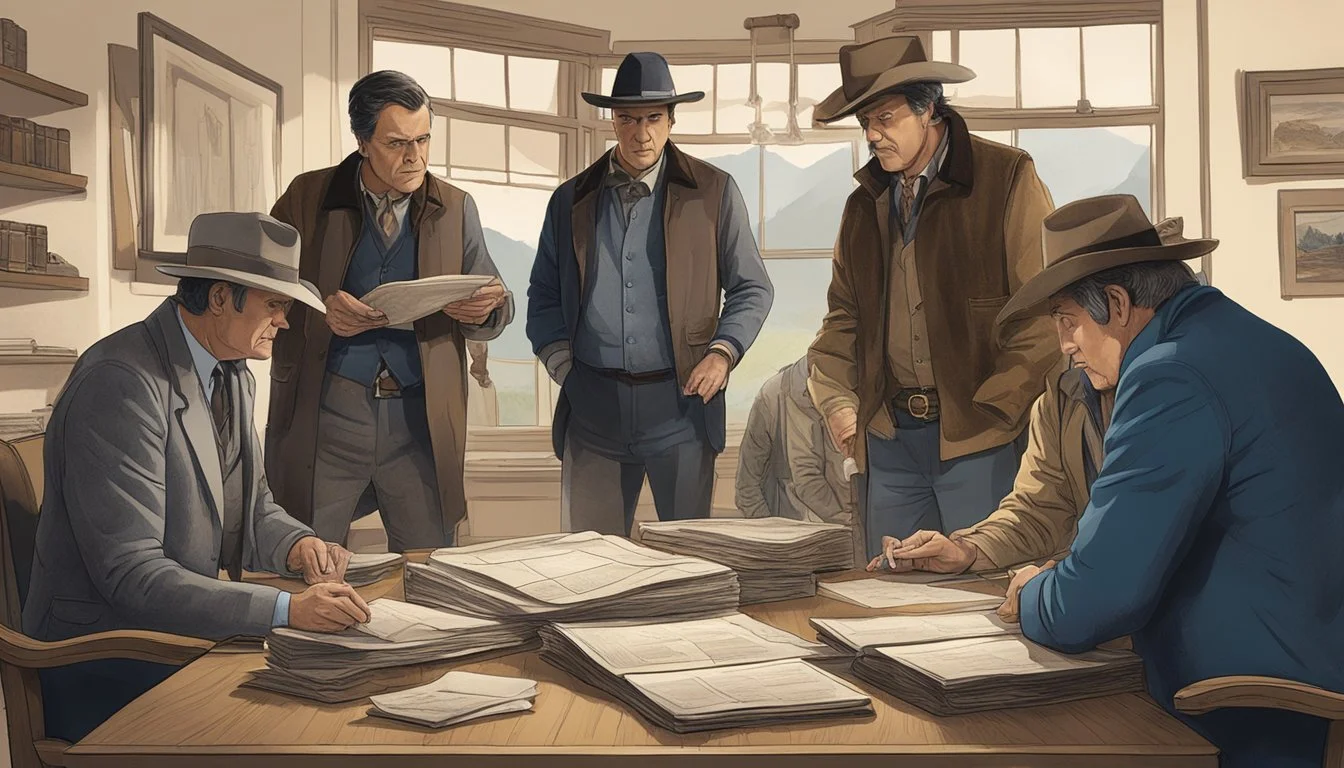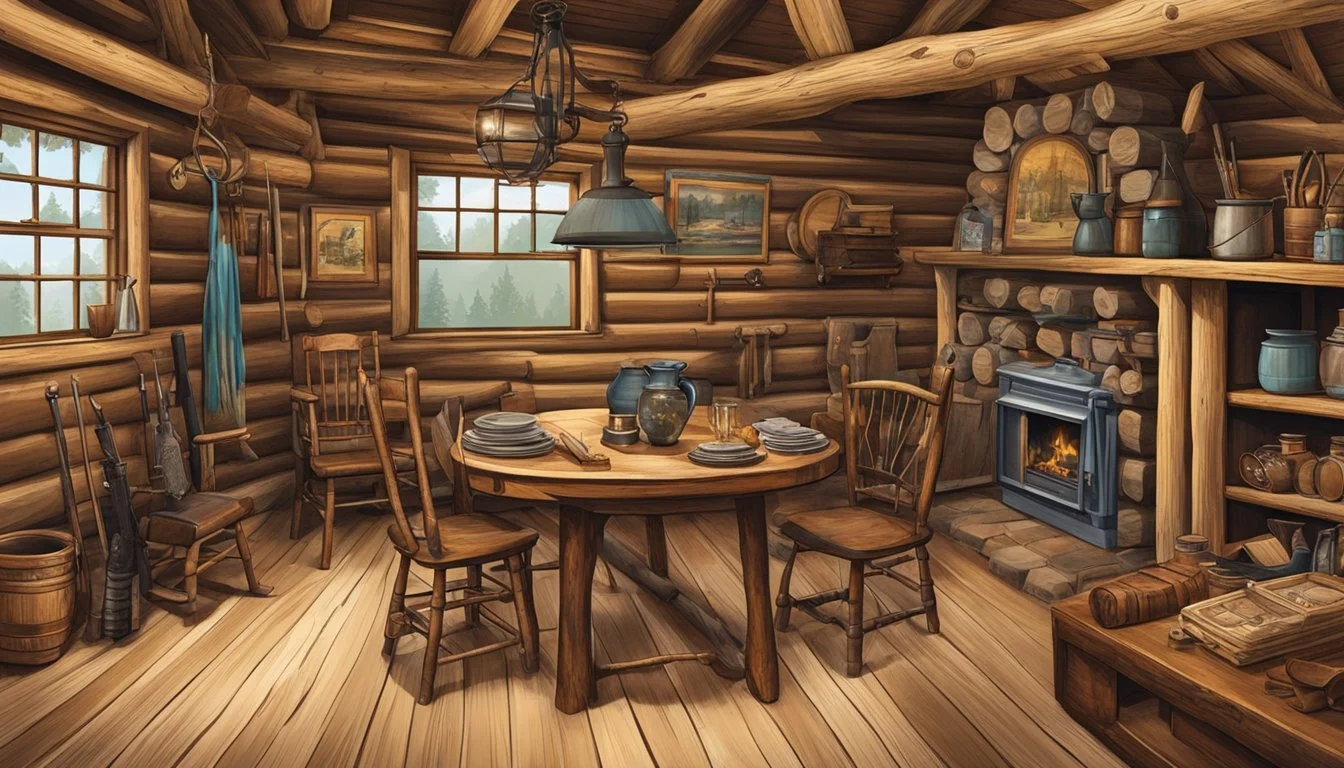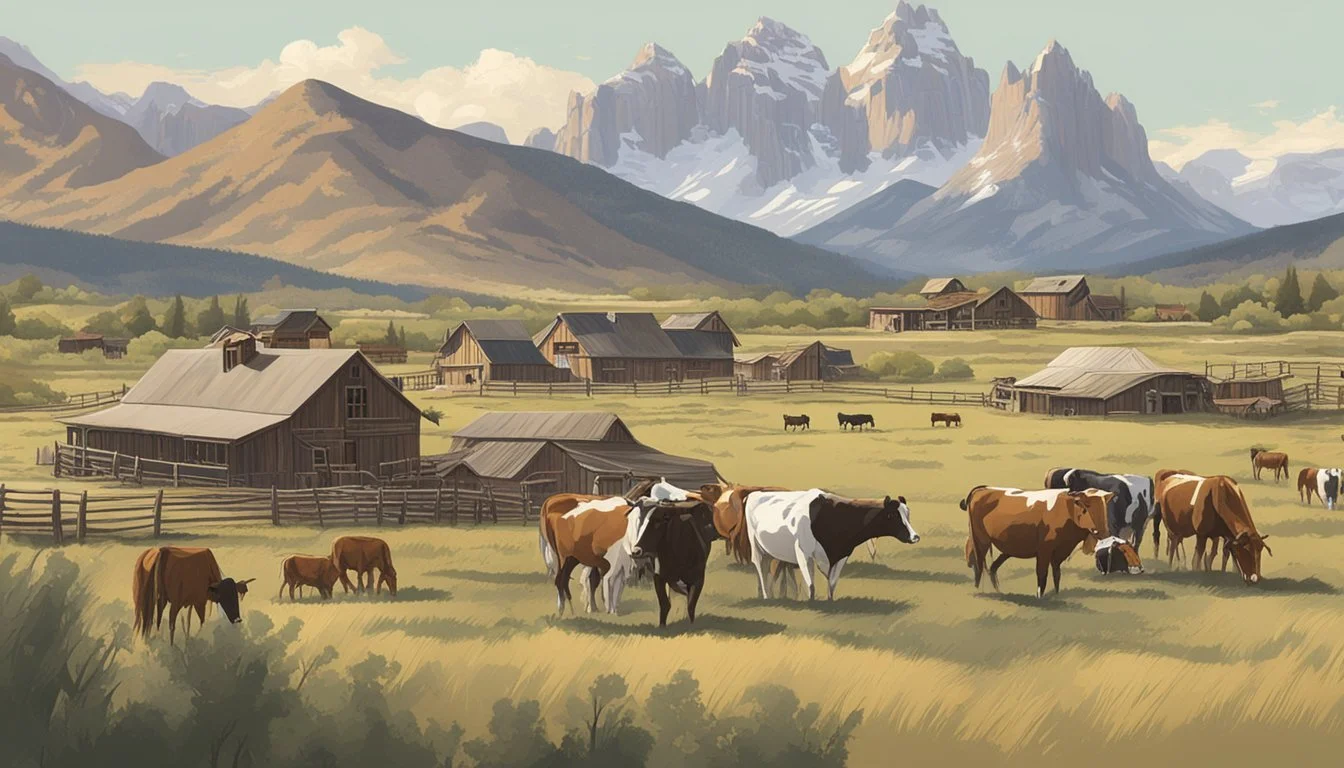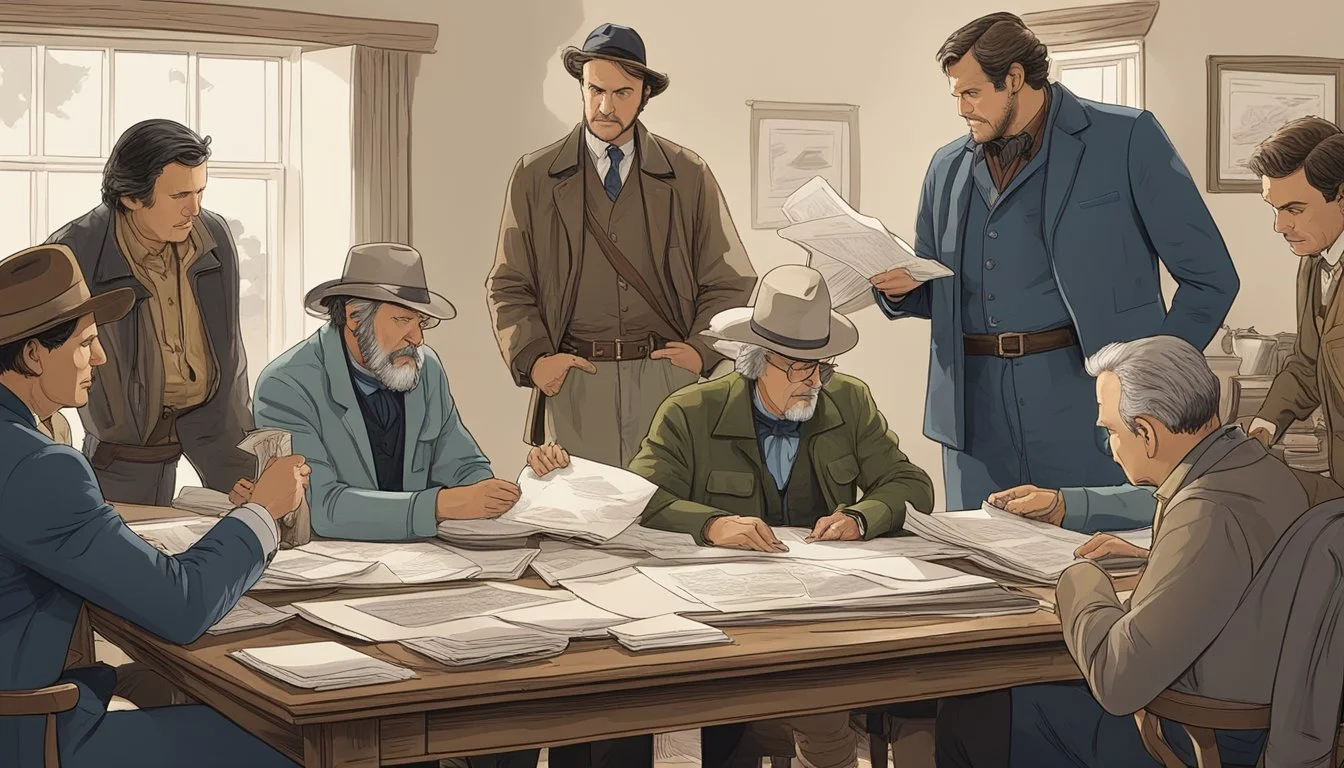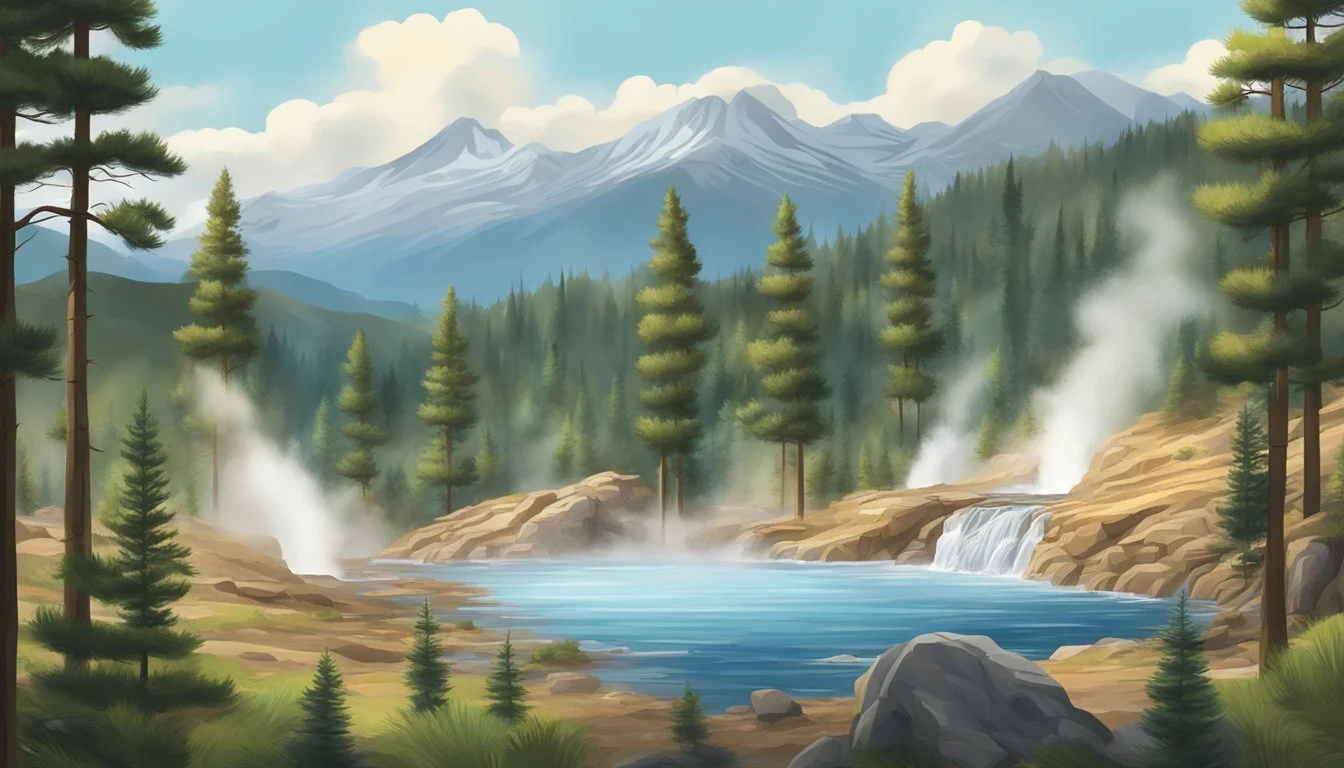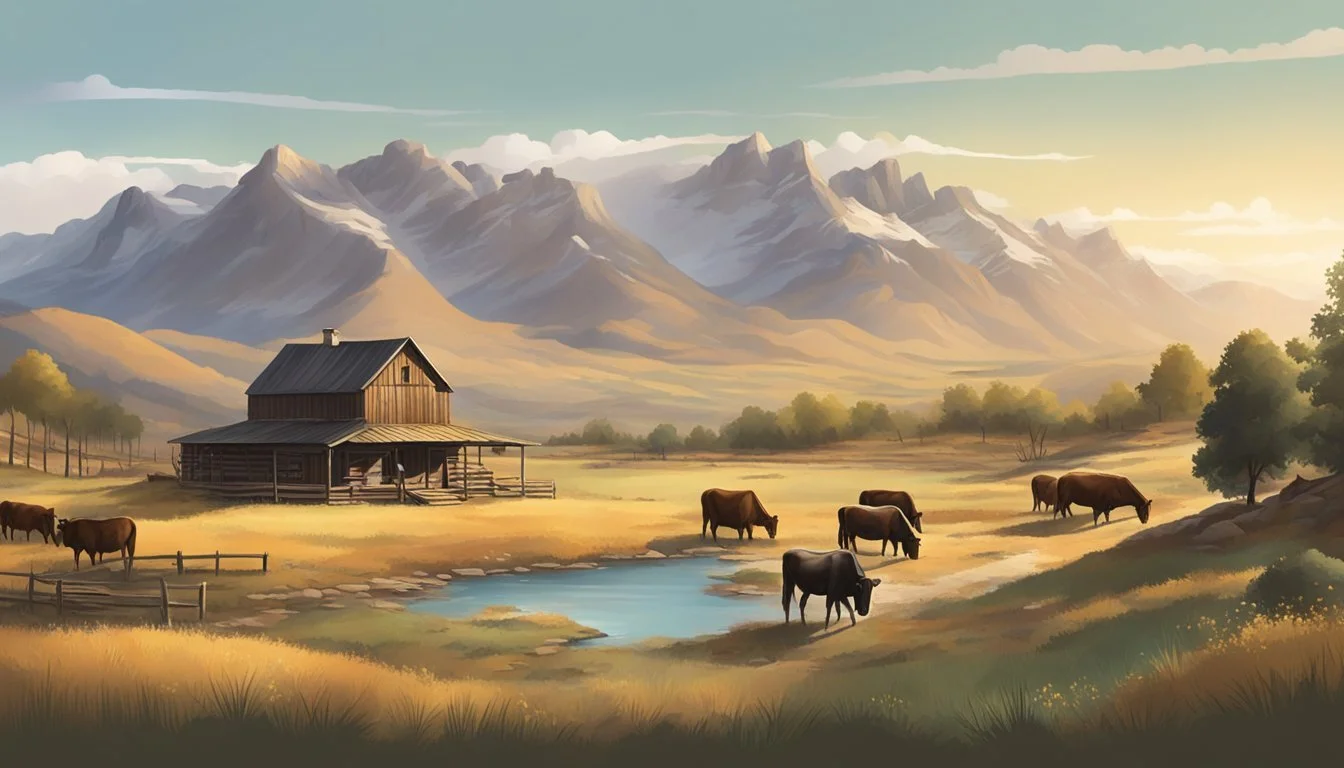6 Times Yellowstone Surprised Us with Historical Accuracy
Unexpected Moments of Realism in the Wild West Drama
Yellowstone, the hit TV series created by Taylor Sheridan, has captivated audiences with its gripping portrayal of the Dutton family's struggles to maintain their vast Montana ranch. Set against the backdrop of stunning landscapes, the show has become known for its dramatic storytelling and compelling characters.
While Yellowstone is a work of fiction, it has garnered praise for its attention to historical detail and realistic depiction of ranch life in the American West. The show's creators have incorporated real events, authentic ranching skills, and accurate portrayals of regional issues into the narrative, adding depth and authenticity to the fictional world of the Duttons. This blend of fact and fiction has contributed to Yellowstone's widespread appeal and critical acclaim.
1) Expert Consultation for Historical Settings
Yellowstone's commitment to historical accuracy shines through its meticulous attention to period details. The show's creators enlisted the expertise of historians and cultural consultants to ensure authenticity in depicting the early 20th century American West.
These specialists provided invaluable insights into the clothing, tools, and daily life of the era. Their input helped craft realistic portrayals of ranch operations, Native American customs, and societal norms of the time.
The production team worked closely with historical advisors to recreate accurate living spaces, from frontier cabins to lavish ranch houses. This collaboration extended to designing authentic props and set pieces that reflect the technological advancements of the period.
Experts in Western folklore and cowboy culture were also brought on board. Their knowledge informed the show's depiction of ranching techniques, horse-riding styles, and cattle-driving practices, lending credibility to the characters' lifestyles and occupations.
By consulting with archaeologists and anthropologists, Yellowstone ensured respectful and accurate representations of Native American tribes. This approach helped avoid stereotypes and provided a more nuanced portrayal of indigenous cultures.
2) Authentic Costume Design by Janie Bryant
Janie Bryant's costume design for the Yellowstone franchise brings historical authenticity to the screen. Her work on the prequel series 1883 and 1923 showcases meticulous attention to period-appropriate attire.
Bryant, an Emmy Award-winning designer, draws on her extensive experience in Western-themed productions. Her previous work on HBO's Deadwood prepared her for the challenges of recreating late 19th and early 20th-century frontier fashion.
For 1883, Bryant crafted costumes that reflected the harsh realities of pioneer life. She used natural fabrics and muted colors to portray the worn, practical clothing of westward travelers.
In 1923, Bryant's designs evolved to represent the changing styles of the 1920s while maintaining a rugged, Montana ranch aesthetic. Her costumes blend historical accuracy with character development, enhancing the visual storytelling.
Bryant's research-driven approach ensures that each character's wardrobe aligns with their social status, occupation, and personal journey. This dedication to authenticity contributes significantly to the immersive viewing experience of the Yellowstone universe.
3) Kevin Costner's Insight into Ranch Life
Kevin Costner's portrayal of John Dutton in Yellowstone brings authentic insight into ranch life. His experience growing up in rural California and working on farms influenced his performance.
Costner's understanding of ranch operations shines through in his depiction of daily tasks and decision-making. He accurately portrays the challenges of managing vast acreage and livestock.
The actor's familiarity with horseback riding and cattle handling adds realism to scenes involving these activities. His comfort around animals and ranch equipment is evident on screen.
Costner's grasp of ranching culture is reflected in his character's values and leadership style. He captures the rugged individualism and deep connection to the land that many ranchers embody.
The show's attention to detail in ranch logistics and terminology is enhanced by Costner's input. His personal knowledge helps ensure accuracy in portraying the business side of ranching.
4) Collaboration with Historians for Accuracy
Yellowstone's production team takes historical accuracy seriously. They regularly consult with historians and experts to ensure authenticity in their portrayal of the American West.
These collaborations help the show depict realistic land disputes, cultural practices, and historical events. Historians provide valuable insights into the daily lives of ranchers and Native Americans during different time periods.
The show's creators work closely with Native American advisors to accurately represent indigenous cultures and traditions. This attention to detail extends to costumes, set designs, and dialogue.
Experts in Western history also assist in crafting storylines that reflect real challenges faced by ranchers and settlers. This collaboration helps maintain a balance between entertainment and historical authenticity.
By working with historians, Yellowstone creates a more immersive and credible viewing experience. It allows the show to educate audiences about lesser-known aspects of Western American history while delivering compelling drama.
5) Detailed Recreation of 1883 Era
The Yellowstone prequel 1883 impressed viewers with its meticulous attention to historical detail. The show's creators went to great lengths to accurately portray life in the late 19th century American West.
Costumes and props were carefully researched and crafted to match the period. From the covered wagons to the firearms, every item on screen was chosen for its authenticity.
The series showcased the harsh realities of pioneer life. It depicted the dangers of river crossings, encounters with Native American tribes, and the ever-present threat of disease.
1883 also captured the social dynamics of the time. The interactions between different classes, nationalities, and races reflected the complex social landscape of the era.
The show's portrayal of transportation was particularly noteworthy. Horse-drawn wagons and early railroads were featured prominently, highlighting the challenges of long-distance travel in that period.
Even small details like personal hygiene and food preparation were accurately represented. This commitment to historical accuracy helped create an immersive viewing experience that transported audiences back to 1883.
6) Filming in Real Historical Locations
Yellowstone's commitment to authenticity extends to its filming locations. The show utilizes several real historical sites that add depth and realism to the storyline.
Chief Joseph Ranch in Darby, Montana serves as the iconic Dutton Ranch. This century-old working cattle ranch provides a genuine backdrop for many key scenes.
The series also features Fort Yellowstone, a National Historic Landmark. Built in the late 1800s, this former U.S. Army base now serves as park headquarters and appears in various episodes.
Livingston, Montana plays a significant role in Yellowstone's production. This historic railroad town, founded in 1882, lends its vintage Main Street and buildings to create an authentic Western atmosphere.
The show occasionally films at Ghost Ranch in New Mexico. This 21,000-acre retreat center boasts a rich history dating back to the Triassic period and has ties to famous artist Georgia O'Keeffe.
By incorporating these real historical locations, Yellowstone enhances its storytelling and offers viewers a glimpse into the genuine Western landscapes and heritage that shape the series' world.
The Historical Context of Yellowstone
Yellowstone explores the complex dynamics of Western expansion and frontier life in Montana. The show draws inspiration from real historical events and patterns that shaped the American West.
Influence of Western Expansion
The 19th century saw a massive push westward across the United States. This expansion brought settlers, ranchers, and entrepreneurs into conflict with Native American tribes. Yellowstone reflects this tension through the Dutton family's efforts to maintain their vast ranch.
Land disputes were common during this era. The show accurately portrays the struggle between established ranchers and newcomers vying for territory. It also highlights the role of cattle barons in shaping local economies and politics.
The series touches on the impact of railroads in opening up the West. This development brought new opportunities and challenges to frontier communities.
The Reality of Frontier Life
Frontier life was harsh and demanding. Yellowstone captures this reality through its depiction of daily ranch operations and survival challenges. Characters face extreme weather, dangerous wildlife, and isolation.
The show accurately portrays the importance of horsemanship and cattle driving skills. These were essential for managing large herds across vast territories. It also depicts the reliance on firearms for both protection and hunting.
Yellowstone doesn't shy away from the lawlessness that often prevailed in frontier towns. Conflicts were frequently settled through violence rather than legal means. The series showcases this through its depiction of local power struggles and vigilante justice.
Authenticity in Costumes and Set Design
Yellowstone's attention to historical accuracy extends beyond its storylines, encompassing the visual elements that bring the show to life. The costume and set design teams have meticulously crafted a world that feels authentic to both past and present.
Period-Accurate Wardrobe Choices
The costume design of Yellowstone blends traditional cowboy attire with contemporary influences. Johnetta Boone, who took over as costume designer from season 2, has maintained a commitment to authenticity while adapting to modern sensibilities. The show's wardrobe reflects the rugged lifestyle of ranch work, featuring practical items like denim, leather, and sturdy boots.
Characters' clothing choices are tailored to their backgrounds and roles. For instance, Rip Wheeler's wardrobe consists of muted tones, reflecting his no-nonsense personality and troubled past. The Dutton family's attire strikes a balance between ranch functionality and their status as wealthy landowners.
Boone works closely with real cowboys to ensure accuracy in the details, from hat styles to the way chaps are worn. This attention to detail helps create a believable world that resonates with viewers familiar with Western culture.
Recreating Historical Settings
Yellowstone's set design team has gone to great lengths to recreate authentic Western environments. The show's primary setting, the Dutton ranch, combines elements of traditional ranch architecture with modern amenities, reflecting the family's long-standing presence in the area.
Historical buildings and locations are meticulously researched and recreated. Period-appropriate materials and construction techniques are used when possible to maintain authenticity. The production team often consults local historians and archaeologists to ensure accuracy in depicting Montana's past.
Interior spaces are furnished with a mix of antique pieces and custom-made replicas. Props and set dressings are carefully selected to match the time period and character backgrounds. This attention to detail extends to smaller elements like farm equipment, tools, and everyday objects used on the ranch.
Cultural and Social Dynamics
Yellowstone's depiction of cultural and social dynamics in the American West offers surprising moments of historical accuracy. The show tackles complex issues surrounding Native American history and the ranching heritage of Montana with nuance and authenticity.
Portrayal of Native American History
Yellowstone incorporates authentic Native American perspectives through characters like Chief Thomas Rainwater. The series accurately portrays land disputes between tribes and the U.S. government, reflecting historical conflicts over reservation boundaries. Cultural traditions like sweat lodge ceremonies are depicted with respect and attention to detail.
The show also addresses the painful legacy of Indian boarding schools, where Native children were forcibly assimilated. This dark chapter of history is woven into character backstories, shedding light on intergenerational trauma.
Representation of Ranching Heritage
Yellowstone captures the essence of Montana's ranching culture with remarkable accuracy. The show's depiction of cattle drives, branding techniques, and horse training reflects genuine ranching practices passed down through generations.
The series explores the economic challenges faced by modern ranchers, including land development pressures and changing markets. This mirrors real-world issues affecting ranching communities across the American West.
Traditional cowboy skills like roping and riding are showcased authentically, with many cast members performing their own stunts. The show's attention to period-appropriate tack and equipment adds another layer of historical accuracy to its portrayal of ranching life.


